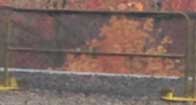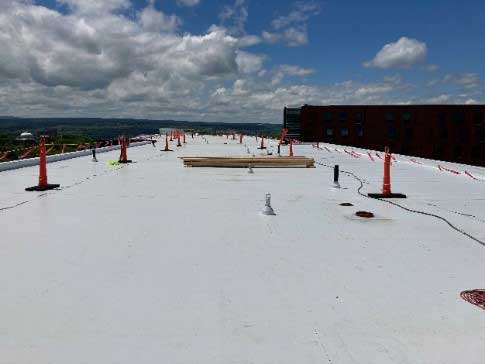Fall Prevention Toolbox Talk
The purpose of the Fall Prevention Program is to identify guidelines to protect all employees engaged in work activities that expose them to potential falls from elevations. An important element of protecting employees working at heights is the identification of fall hazards and the proper controls needed.
The workplace must be assessed for potential fall hazards before performing an assigned job task. When fall hazards are identified, the primary goal is to eliminate the fall hazards where feasible and to follow the hierarchy of controls when elimination isn’t feasible. In many cases, a combination of controls should be implemented to reduce exposure to fall hazards. Primary fall hazard control options include the following:
- Elimination or Substitution: Remove the hazard or use a safer alternative.
- Passive Fall Protection (e.g., Guardrail System): Isolate or separate the hazard from workers.
- Fall Restraint
- Fall Positioning
- Fall Arrest
- Administrative Controls
Guardrail System:
A barrier erected along an unprotected side of a walking-working surface to prevent falls to a lower level. A guardrail system consists of a top rail 42 inches above the walking-working surface, a midrail between the top rail and toeboard, and a toeboard a minimum of 3.5 inches from the walking-working surface.
Fall Restraint System:
A system consisting of a full-body harness, lanyard, cable, or rope with a rope grab at a predetermined length that allows workers to move only as far as the sides of the work area and
prevents the wearer from reaching a fall hazard. The system will let the employee walk around and be able to reach the edge but will not let the employee fall off the edge. No rescue plan is needed.
Fall Positioning System:
A system of equipment and connectors that, when used with a body harness, allows an employee to be supported on an elevated vertical surface, such as a wall or window sill, and work with both hands free. A positioning system shall be rigged in such a way that an employee cannot free fall more than 2 feet. A rescue plan is required.
Personal Fall Arrest Systems (PFAS):
Designed to catch an employee when a fall occurs. Fall arrest does not prevent the fall but controls the distance of the fall. A PFAS consists of an anchor point, connector, and a full-body harness. A rescue plan is required.
Administrative Controls:
Work practices or procedures designed to provide a warning of a fall hazard. Administrative controls
include designated areas, warning lines, safety monitoring systems, and fall hazard assessment plans. More information on Administrative Controls can be found in the Cornell University Fall Prevention Program.
In addition to identifying the proper controls, don’t forget to always inspect your equipment before each use. Fall protection equipment shall also be inspected by a competent person on an annual basis.
Remember, wearing a harness should not be your first choice to protect yourself from a fall, but, if fall protection is needed, wear it properly, inspect it, be trained, and connect to the right anchor.
Revised 12/6/2021



